
Recordings of Chogyam Trungpa at Naropa have yielded material for many of his books. The Naropa material is exceptional in the diversity of the subject matter and the originality of Chogyam Trungpa’s approach to varied topics, from the Buddhist path to psychology to the fundamental understanding of symbolism and perception in the arts.
The Establishment of Naropa
The establishment of Naropa University in 1974 was a landmark in Trungpa Rinpoche’s presentation of the Buddhist teachings in North America. The seminars that Rinpoche taught provided him with large audiences, often of more than 1,000 students, who came from diverse backgrounds. The faculty included Buddhist practitioners, intellectuals from East and West, religious adepts and masters from many religions, artists, poets, writers, psychologists, and masters of contemplative disciplines such as Japanese tea ceremony as well as accomplished martial artists.
Loka Journal
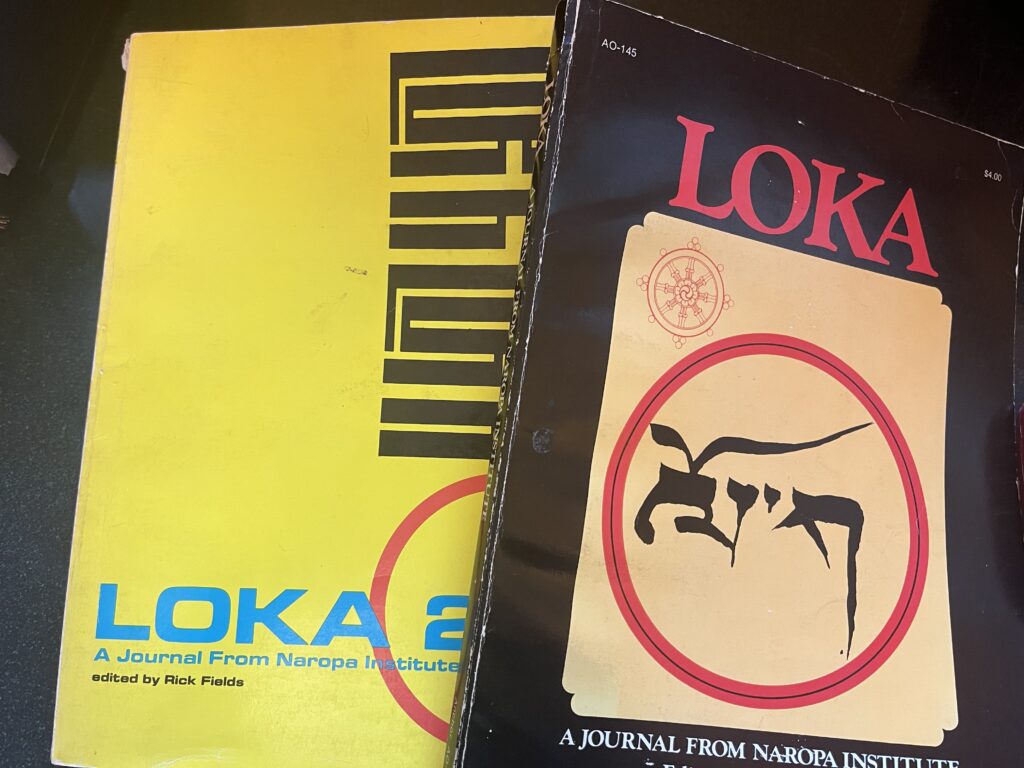
Right away, Naropa drew a lot of attention to itself and itself was the object of a publication: Two volumes of Loka: A Journal from Naropa Institute were published by Anchor Books following the 1974 and then the 1975 summer sessions at Naropa. In Volume One of Loka, we find 17 pages of poetry, much of it original to the first summer, composed by Allen Ginsberg, Chogyam Trungpa, Anne Waldman, Diana de Prima, John Giorno and others. In a line from one of her poems, “Boulder Blues,” Anne Waldman writes: “We are here to disappear.” This is at once a curious but noble aspiration—at what was clearly one of the most visible “happenings” of its time.
Naropa: A Grand Experiment
People who attended Naropa in these early years talk about the energy and inspiration that they experienced, the uniqueness of the experience, and how for many, it changed their lives. But what might the experience of Naropa Institute have been for Chogyam Trungpa? It certainly influenced his teaching and his books, in both style and content. Naropa certainly provided a big playing field with many opportunities to improvise, to experiment, and to expand his conversation with the American audience and indeed the American psyche altogether.
Exploring the Original Teachings
By exploring the original recordings, as well as Chogyam Trungpa’s books and articles themselves, we can learn much about Chogyam Trungpa in these early days. The first summer of Naropa, 1974, he taught three seminars, participated in panel discussions, gave a public talk, and opened the Institute with a convocation address that remains a blockbuster to this day, laying out his vision for the institution.
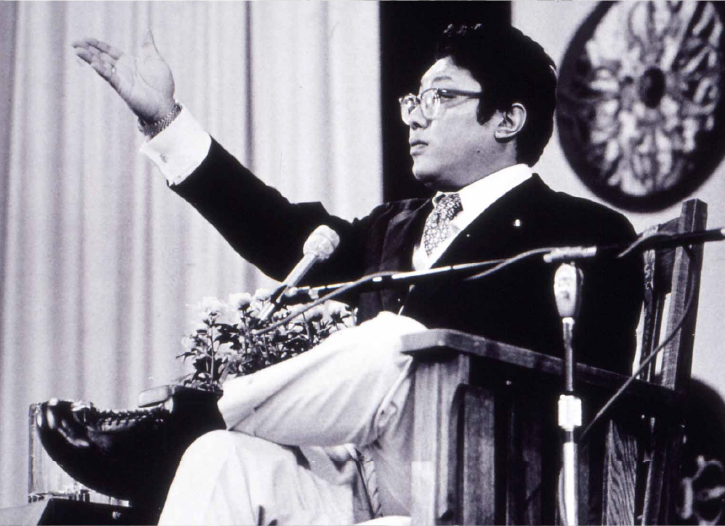
Buddhism at Naropa
The seminars in 1974 all had a Buddhist bent. The first course, entitled “The Tibetan Buddhist Path,” which Rinpoche taught twice weekly during the first session, alternated with weekly talks that formed a seminar on meditation, entitled “Meditation: The Way of the Buddha.” Material from the 1974 seminar on Meditation has been used in two recent books by Chogyam Trungpa: Mindfulness in Action and Smile at Fear.
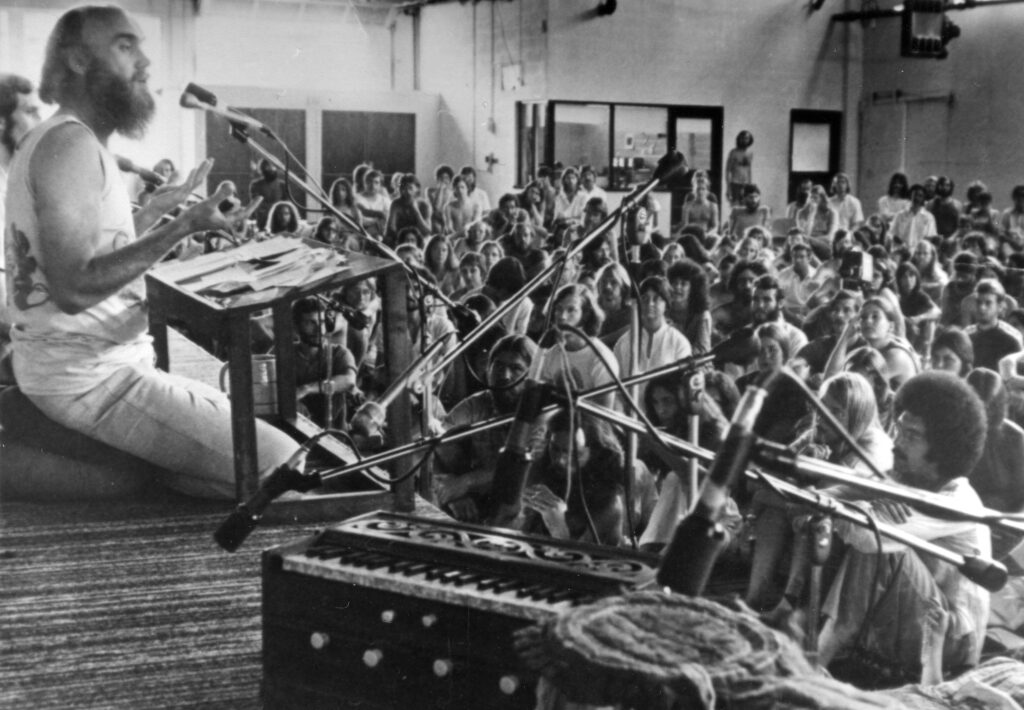
Chogyam Trungpa and Ram Dass alternated nights during the first session, in what might be called the Battle of the Dharma Brands, with Ram Dass chanting and exuding bhakti while Trungpa Rinpoche exhorted the audience not to be hoodwinked by nor fall prey to spiritual materialism.
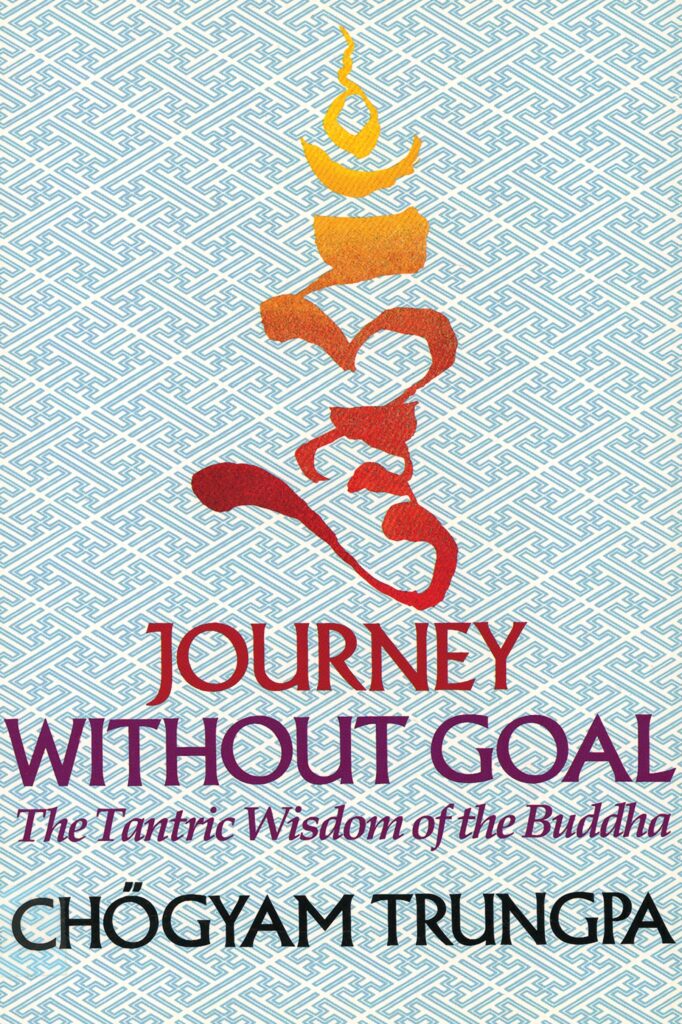
Interestingly, the material from these two seminars remained unpublished for more than 40 years, for reasons nobody seems to understand, since they are both amazing presentations of the Buddhist teachings. The third seminar that summer, a 14-talk extravaganza on on the theme of Tantra was published in 1981 as Journey without Goal: The Tantric Wisdom of the Buddha.
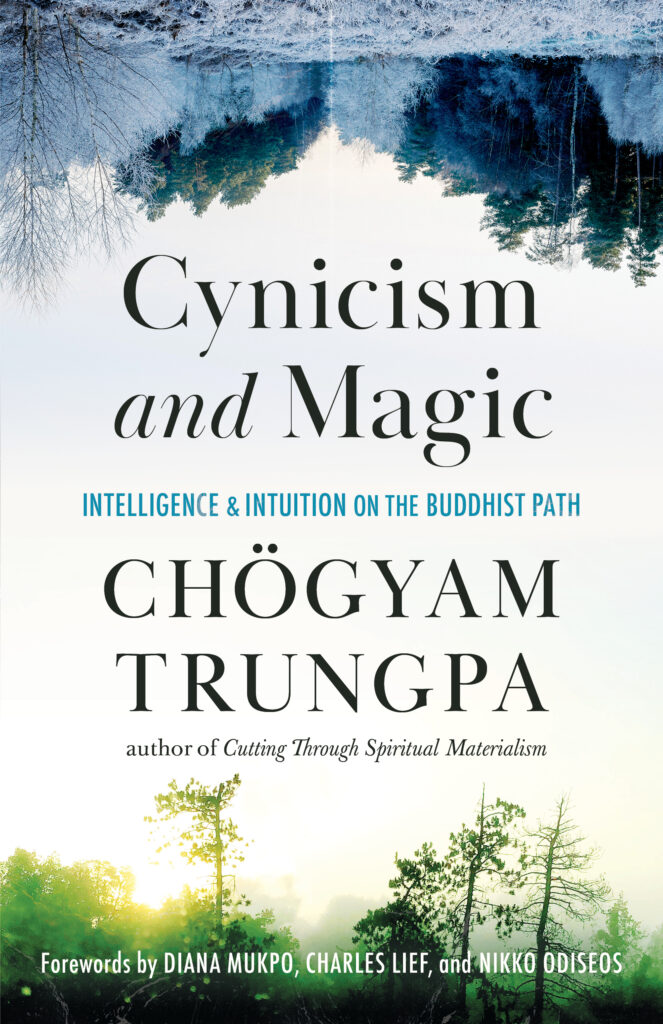
The Tibetan Buddhist Path seminar from 1974 was finally edited and published in 2021 as Cynicism and Magic: Intelligence and Intuition on the Buddhist Path. It is the first book edited by a new generation of editors, More than 45 years after the original talks were given, this book has an original and fresh voice.
While the seminar on the Tibetan Buddhist Path was—on the one hand—a traditional overview, it was—on the other hand—anything but that. It included a talk on song and poetry, emphasizing spontaneous poetry, and there was also a talk on the relationship between Tibetan Buddhism and Zen. In this presentation of the path and also in the later seminar on tantric or Vajrayana Buddhism, Trungpa Rinpoche is clearly seeing both the depth of his own tradition while understanding the background and mentality of Westerners. He was giving people the understanding they would need to eventually step fully inside the tradition and the practice. He had been crisscrossing the USA and much of Canada for close to four years, talking with thousands of people. Rather than trying to convert them to a system of religion and thought, he was interested in bringing together East and West in a holistic way. Naropa was a place where East and West could meet and where that could spark all kinds of energy.
Each summer at Naropa, beginning in 1974 and continuing through 1978, Chogyam Trungpa taught a course on themes from the Buddhist path or he also presented a course on the practice and view of meditation. He kept expanding and deepening the conversation about Buddhism and its genuine practice. Other than the two books based on material from 1974, however, none of these later seminars have been published. With the continuing interest in the material, eventually there may be many additional publications from the Naropa Buddhist material.
Art and Aesthetics

Beginning in 1975, Trungpa Rinpoche also began teaching seminars at Naropa on art and aesthetics, under the banner of “The Iconography of Buddhist Tantra” in 1975 and then using “Visual Dharma” headline for seminars in the summer of 1978 and 1979. This material is included in True Perception: The Path of Dharma Art, which lays out his unique aesthetic and epistemological theories about art and perception.

The original video recordings offer unique elements not easy to show effectively in a book. The videos include many slide presentations by Trungpa Rinpoche of his own photographs and other historical and iconographical works of art.
In the Visual Dharma seminars from 1978 and 1979, he gives many demonstrations, including calligraphy, a discipline called “Object Arrangement,” and reads some of his poetry.

Shambhala at Naropa
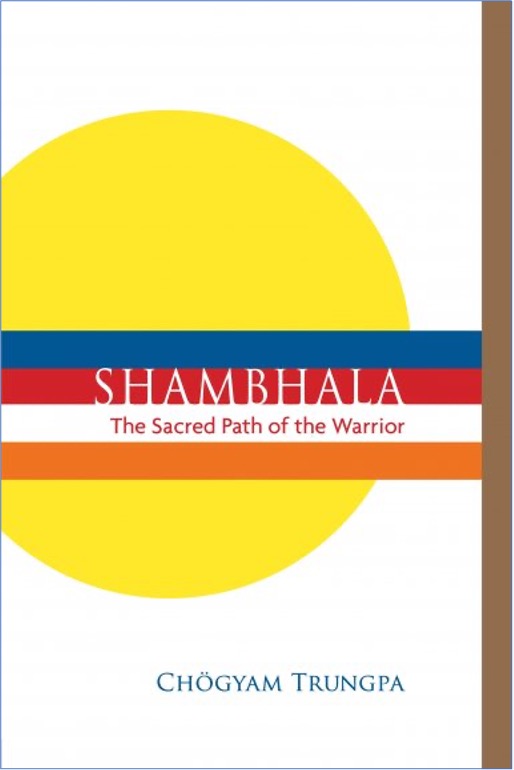
In 1977, Chogyam Trungpa did a yearlong retreat, absenting himself from many responsibilities, including teaching at Naropa. During that time, he concentrated on teachings concerning the Shambhala path of warriorship. He also began to focus on larger issues of how to positively affect society, and what he called “creating an enlightened society.” He brought these ideas and attendant terminology to his seminars at Naropa in 1978 and beyond. His presentation on Visual Dharma in 1978 used concepts and themes from the Shambhala work he was undertaking. And in 1979, he presented a seminar—jointly with the Vajra Regent Osel Tendzin—on the Warrior of Shambhala. Trungpa Rinpoche’s talks from that seminar became an important part of Shambhala: The Sacred Path of The Warrior, a book that has sold in the millions of copies in more than 30 languages.
Other Disciplines and Publications
Psychology
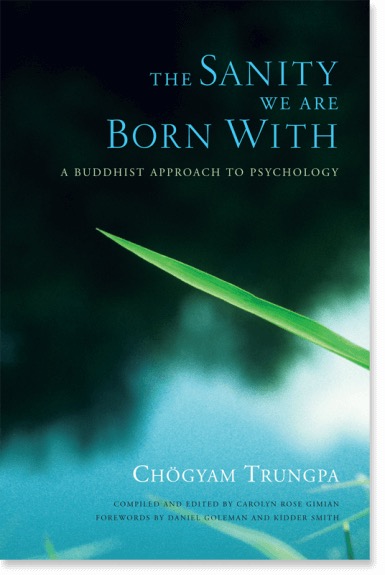
In yet another discipline, that of psychology, Chogyam Trungpa worked closely with the faculty of the psychology department. Talks he gave to students and discussions with faculty and students were edited into journal articles, eventually appearing as material in The Sanity We are Born With: A Buddhist Approach to Psychology, published in 2005.
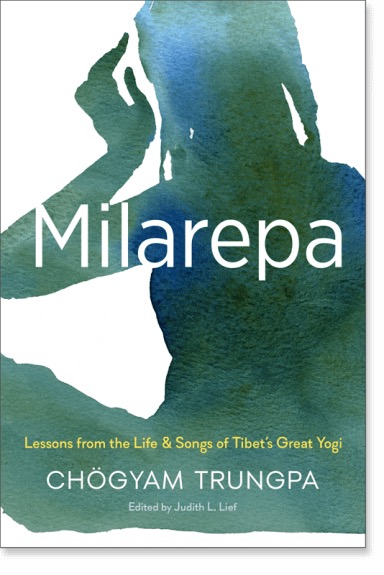
Lineage
In another vein, a seminar on the life and yogic songs of Milarepa, given in 1976, was incorporated into a volume published in 2017: Milarepa: Lessons from the Life and Songs of Tibet’s Great Yogi. Again, the book came forty-plus years after the original seminar was given!
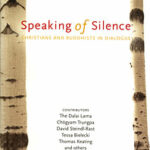
Interfaith Dialog
At least two other areas of Rinpoche’s work at Naropa have produced significant publications. The Christian-Buddhist conferences were edited into Speaking of Silence, a volume that includes several talks and panel discussions with Chogyam Trungpa.
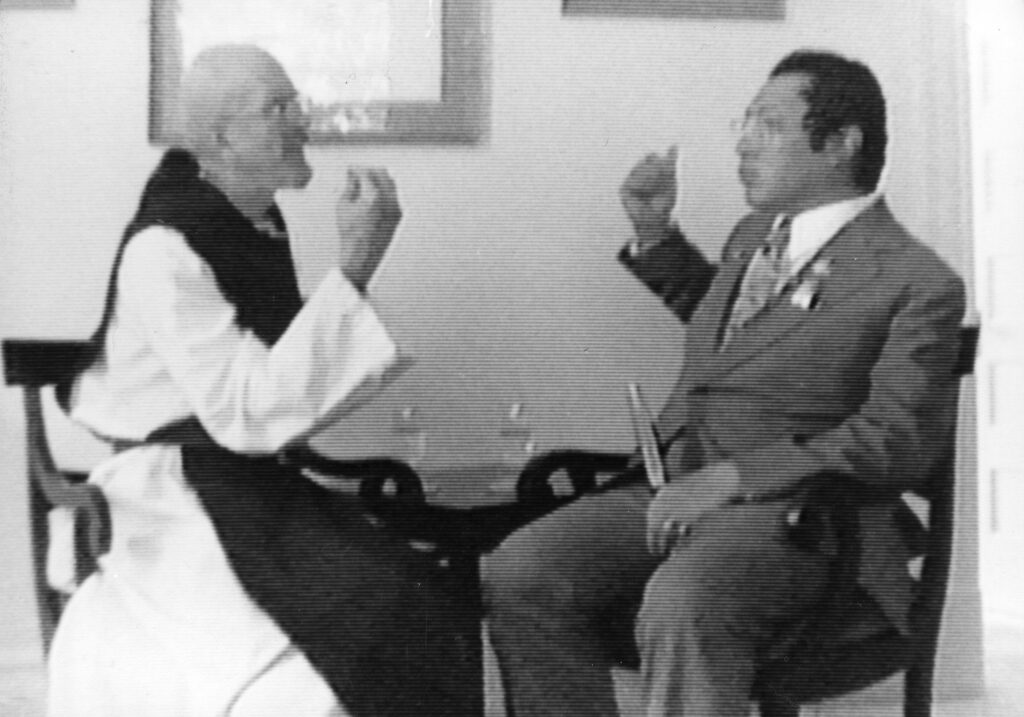
Poetics
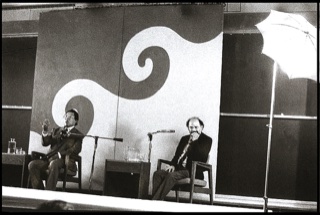
And Trungpa Rinpoche’s meetings, poetry readings, and other discussions with the poets at Naropa and in their classes have been included in various publications. Altogether, his connection with Allen Ginsberg, Anne Waldman and other Naropa poets had a huge influence on his own poetry, and was the source of much poetic collaboration and consternation. Explore more about Chogyam Trungpa and poetry at Naropa in this article.
Naropa University
Naropa Institute became Naropa University several years after it opened. This counter-culture experiment in education received candidacy for accreditation as a university a few years later. It is now fully accredited. The recordings of Chogyam Trungpa at Naropa show much of the original energy and excitement that helped create the institution and have helped it to endure for now close to 50 years. And these recordings have made some truly great books. The Chogyam Trungpa Digital Library team is honored to present this material as our first collection.